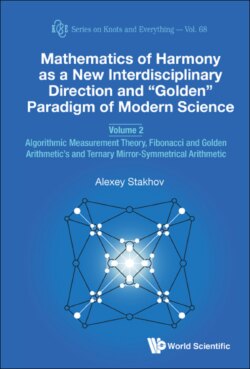Читать книгу Mathematics of Harmony as a New Interdisciplinary Direction and “Golden” Paradigm of Modern Science - Alexey Stakhov - Страница 18
На сайте Литреса книга снята с продажи.
1.6. The “Indicatory” Model of Measurement 1.6.1. The conceptions of the “indicatory” element (IE) and the “indicatory” model of measurement
ОглавлениеWhen we set forth the task of creating the algorithmic measurement theory, it is necessary to clarify once again what the measurement is, what its purpose is, what the measurement algorithm is and what tools we use to implement the measurement.
First of all, we note that if we want to measure something, we must know some source data concerning the measurement, in particular, the range of measurable values. It is one thing to measure the cosmic distances, for example, the distance from the Earth to the Sun and quite another to measure the atomic distances.
However, when we turn to the mathematical measurement, we are distracted from the physical character of the measured quantities;in this case, for all the cases of measurement, we can represent the measurement range in the form of the geometric segment AB.
It is clear that the measurable value is one of the possible values, belonging to this range, that is, before the beginning of the measurement, there is some uncertainty regarding the measurable value; otherwise, the measurement would simply be meaningless. This situation of the “uncertainty” can be depicted by using the “unknown” point X located on the segment AB (Fig. 1.4).
Fig. 1.4. Constructive (“indicatory”) model of measurement.
Now, we can formulate the purpose of measurement. The purpose of measurement consists in the determination of the length of the segment AX (Fig. 1.4). In practice, this purpose is realized with the help of special devices, for example, the “lever scales” or “comparators”.
The “comparators” carry out the comparison of measurable quantity with certain “standard quantities” or “measures”, formed from the “measurement unit” V and, depending on the result of the comparison, they give us information about the position of the measured segment AX on the initial segment AB.Thus, the essence of the measurement reduces to the successive comparisons of the measurable segment AX with some “measures”, which are formed at each measurement step from the unit V according to the measurement algorithm.
In order to model the process of the comparison of the measurable segment AX to the “measures”, the important concept of “indicatory element” (IE), which is a peculiar model of the “comparator” or the “lever scales”, the basic means of any measurement, was introduced in Ref. [16].
We assume that each “indicatory element” (IE) can be enclosed to some “known” point C of the segment AB, according to the measurement algorithm, that is, we can form for every “indicatory element” some “measure” on each step of the measurement.
The “indicatory element” gives us information about the relative position of the “unknown” point X and the “known” point C. If the IE is to the right of the point X, it “indicates” the binary signal 0; otherwise, the binary signal 1.
